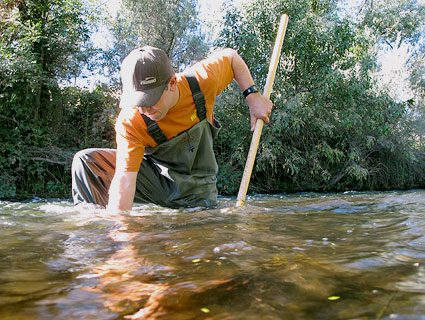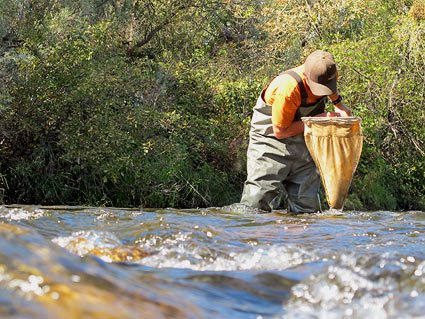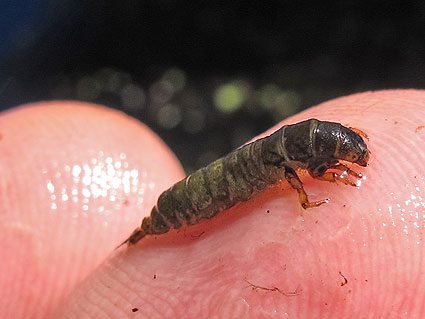Friday October 1, 2010

When doctors talk about your health and BMI, they are usually referring to your Body Mass Index; however in the field of Aquatic Biology we measure the health of a stream using a very different measure of BMI (benthic macroinvertebrates). Aquatic biology often involves monitoring the health of rivers and streams to evaluate impacts of disturbances or restorations, and to track invasions of non-native species. The composition of bottom-dwelling (benthic) invertebrates is a good indicator of stream health. Common examples of benthic invertebrates include snails, amphipods, and aquatic larvae of insects such as mayflies, caddis flies and dragonflies.

Following California Department of Fish and Game (CDFG) California Stream Bioassessment Procedure (CSBP) protocols we use a kick net to collect benthic macroinvertebrate (BMI) samples. Samples are collected from multiple locations along randomly selected transects across stream riffles. While holding a D-shaped kick net (0.5 mm mesh) on the river bottom a FISHBIO biologist uses his hands to clean rocks in a 2 square foot area in front of the net.

Samples collected from the channel substrate are transferred to sample bottles and preserved in 95% ethanol. The benthic samples are transported to the lab where careful taxonomic identification can be completed. Following the CSBP we also collect physical and chemical data to include in the analysis and interpretation of the BMI results.
Photo source: FISHBIO
